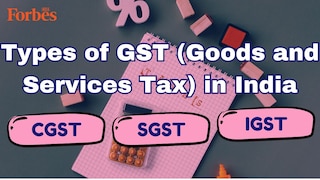Types of GST (Goods and Services Tax) in India
Understand what is GST and types of GST: SGST, CGST and IGST. Also, curious about who foots the GST bill? We answer all your questions


Before the several types of GST (Goods and Services Tax), India"s tax landscape was a labyrinth of various taxes, complicating matters for businesses and the government alike. GST emerged as a solution to streamline this chaos, aiming to simplify processes and enhance tax compliance. And it"s fair to say GST has been a success story for India.
Despite initial challenges, it has facilitated smoother tax operations, minimised tax evasion, and facilitated ease of doing business in India by reducing the problem of “tax on tax". GST has contributed to the country"s economic growth and fiscal stability. In this blog, we will look at the different types of GST taxes and check out who bears the brunt of this tax.
Let’s start with the big question: What is GST?
With GST, the idea is to simplify the tax structure, making it more transparent and efficient for both businesses and consumers. Essentially, it ensures that the tax burden is spread more evenly across various stages of production and distribution. It"s a significant reform that aims to streamline taxation, promote economic growth, and enhance compliance.
Here are the objectives of the types of GST:
It is collected and administered by the state where the supply takes place.
SGST helps states maintain fiscal autonomy and generate revenue from transactions within their borders, contributing to their development and welfare initiatives.
It is collected and managed by the central tax authorities. CGST ensures that the central government has a share of revenue from transactions within the country, providing funds for national programs, infrastructure development, and other central initiatives.
This component of GST aims to streamline the taxation of interstate transactions, ensuring that tax revenues are appropriately allocated between the origin and destination states while reducing compliance burdens for businesses involved in interstate trade.
However, there are certain cases where the liability to pay GST may shift to the recipient of goods or services, such as in the case of reverse charge mechanism for specified goods and services. Additionally, non-resident taxpayers supplying goods or services in India are also liable to pay GST. It"s important for businesses to understand their GST obligations and comply with the relevant regulations to avoid penalties or legal consequences.
What is the full form of GST?The full form of GST is Goods and Services Tax. It"s a comprehensive indirect tax levied on the supply of goods and services across India, aiming to streamline the taxation system by replacing various indirect taxes levied by the central and state governments.
First Published: Sep 09, 2024, 15:46
Subscribe Now